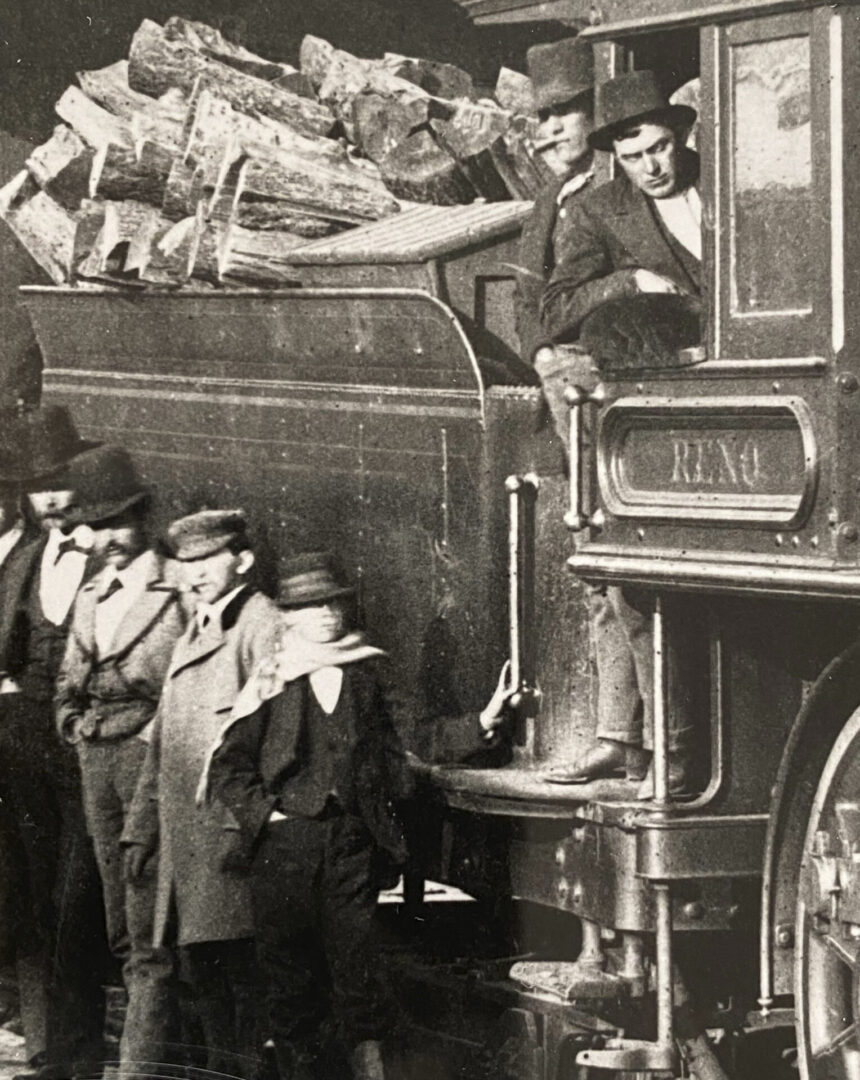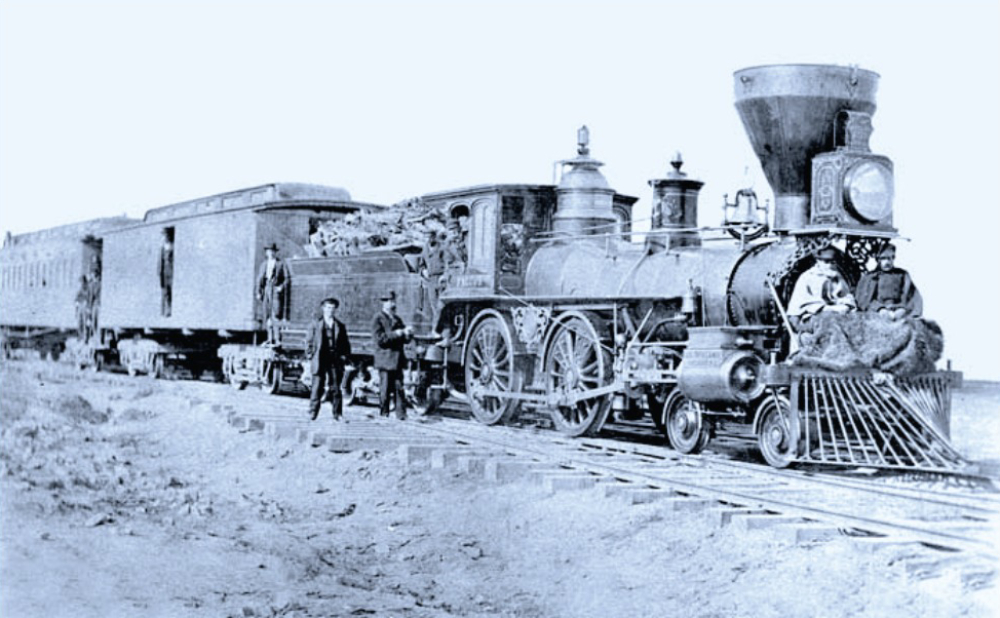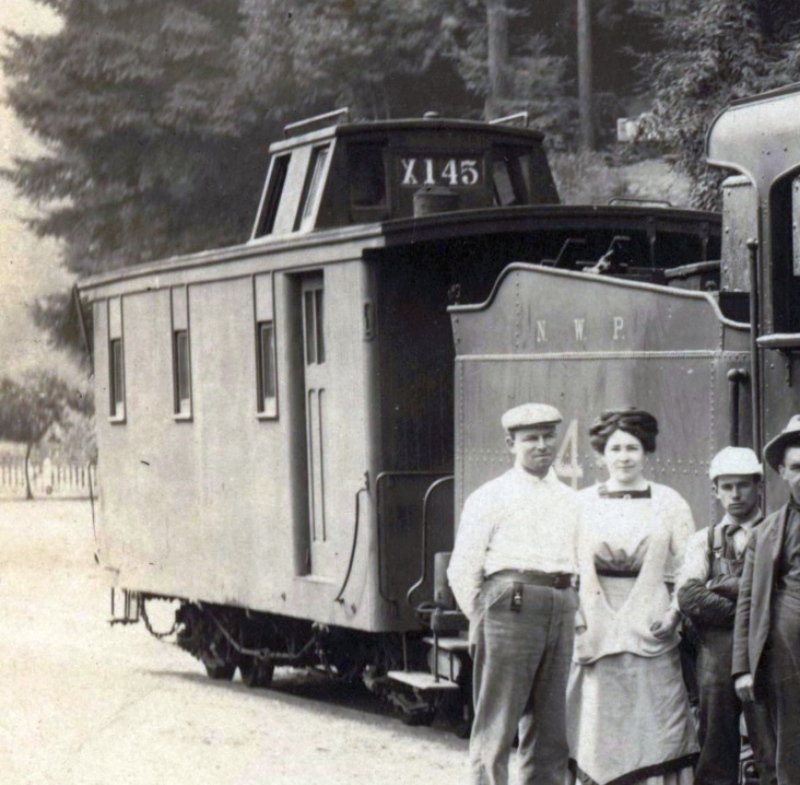On January 13, 1872, the Baldwin Locomotive Works entered the order for the V&T's first passenger locomotive, the Reno, which was later turned out on May 30, 1872. This order was preceded earlier in 1871 by a Specification proposal from Baldwin to the V&T based on the locomotive Camden of the Camden & Atlantic Rail Road. Many features and similarities observed on the Camden and on the Reno can be traced back to Baldwin's Drawing No. 20 of December 12, 1871, which was the master erection drawing for the V&T's first three passenger locomotives: the Reno (1872), the Genoa (1873) and the Inyo (1875).
The painting specifications for the Reno and the Genoa were both "Best Passenger" finish, while the Inyo was ordered in late 1874 with "Wine Color, Style 1". The order specifications for these three locomotives were all back referenced to their previous orders and ultimately to the Reno. In early 1874 Baldwin replaced "Best Passenger" finish with "Style 1", which still contained many design elements of its predecessor. Baldwin painting style changes were evolutionary, not revolutionary, in nature since they embodied a continuous refinement of previous painting versions. Although there is no known actual builder photo of the Reno with its original livery appearance, detailed builder photos of both the Camden and the 1875 J.W. Bowker (with its "Style 1" painting) provide a basis for paining style elements that most likely were also used on the Reno. The Carleton E. Watkins mammoth photo of the Lightning Express train taken at the Carson City depot during the winter of 1877-1878 is the earliest known photo of the Reno. This mammoth photo is believed to show the locomotive's livery appearance, since the locomotive would have been only six years old then. Later photos taken by James H. Crockwell ca. 1890 of the Reno and the Genoa in Virginia City provide additional information and evidence for the painting continuity of the V&T paint shop in maintaining and preserving the original Baldwin paining style.
In the research report that follows, the evolution of Baldwin's "Best Passenger" finish is reviewed from January 1864 through February 1875. 30 high-resolution builder photos evince the subtle details of these painting styles and their evolution up to and just after the transition to "Style 1". An interpretive reconstruction of the Reno's 1872 "Best Passenger" livery appearance is presented which corroborates the same design elements used by Baldwin during this early 1870s period and which still appeared on V&T equipment as late as ca. 1890.

This report examines the Central Pacific Railroad Subsistence Car, which accompanied the CPRR Directors’ Car as its tender in the early years of this railroad’s seminal history. Based on photographic records, journalists’ accounts of this car, and the surviving coach for which it was originally built to serve, a factual exterior rendition and plausible interior interpretation are presented. Any historical account of the surviving Directors’ Car must necessarily include an accurate and ideally complete description of its attending Subsistence Car. The scope and purpose of the research in this report are guided by this common vision. Technical drawings of the Subsistence Car at Promontory are derived largely from the existing 1868 artifact of Coach 17. Aside from the overall car body sway, this research has confirmed and revealed the partial roof collapse.
Please send inquiries for copies of this report to: info@vandtenterprises.com.
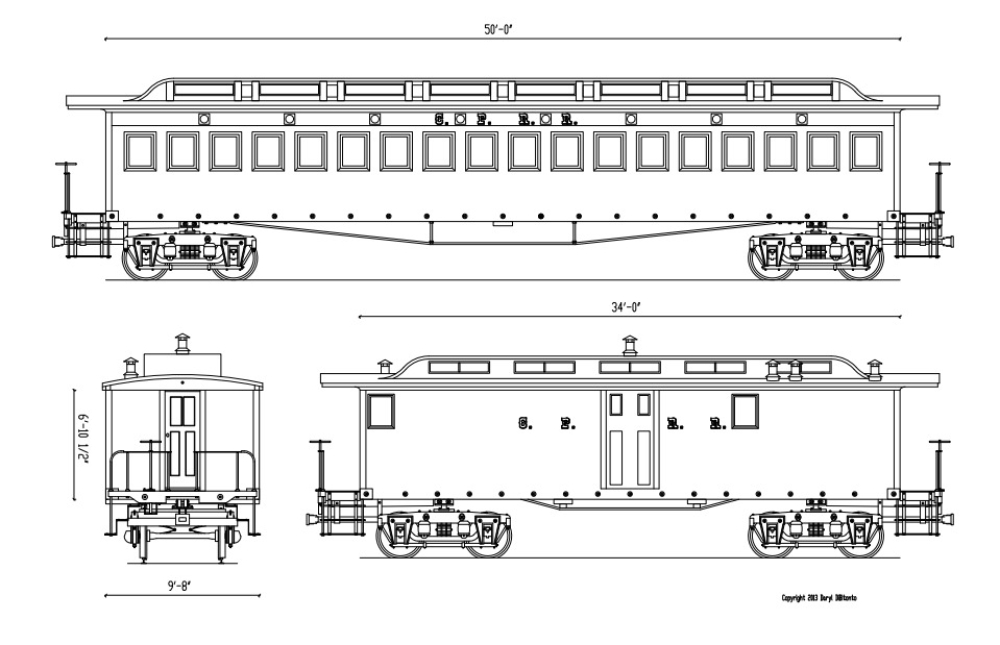
Central Pacific Rail Road Subsistence Car Erection Drawing by V&T Enterprises.
The Society for the Preservation of Carter Railroad Resources (SPCRR) is restoring its narrow gauge North Western Pacific Caboose No. 6101 to its 1913 appearance. V&T Enterprises has provided vital engineering elevations and component drawings for this project based on research and on-site measurements of the artifact. Complete historical documentation of the original period redwood construction and assembly of this car provides an important record of this artifact for its restoration. Off-site fabrication of custom period parts, such as hand-forged braces for its tie rods, has relied critically on these detailed component specifications.
Since the drawing copyright belongs to the SPCRR, please send inquiries for copies of NWP 6101 elevations and drawings by V&T Enterprises directly to the SPCRR: president@spcrr.org.
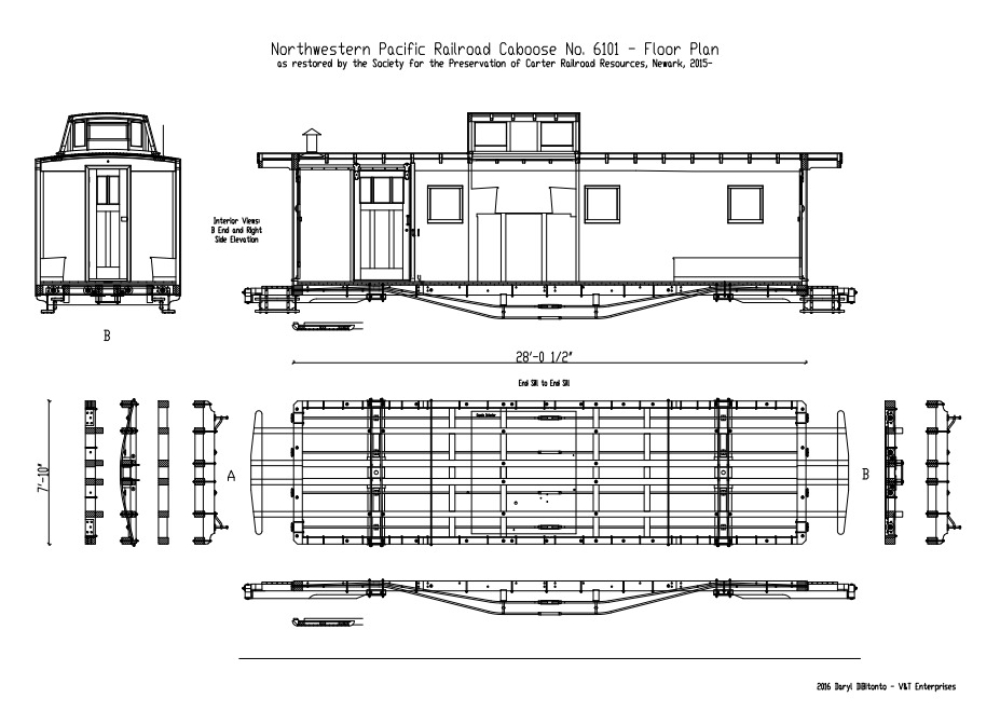
NWP Caboose No. 6101 Erection Drawing by V&T Enterprises.

